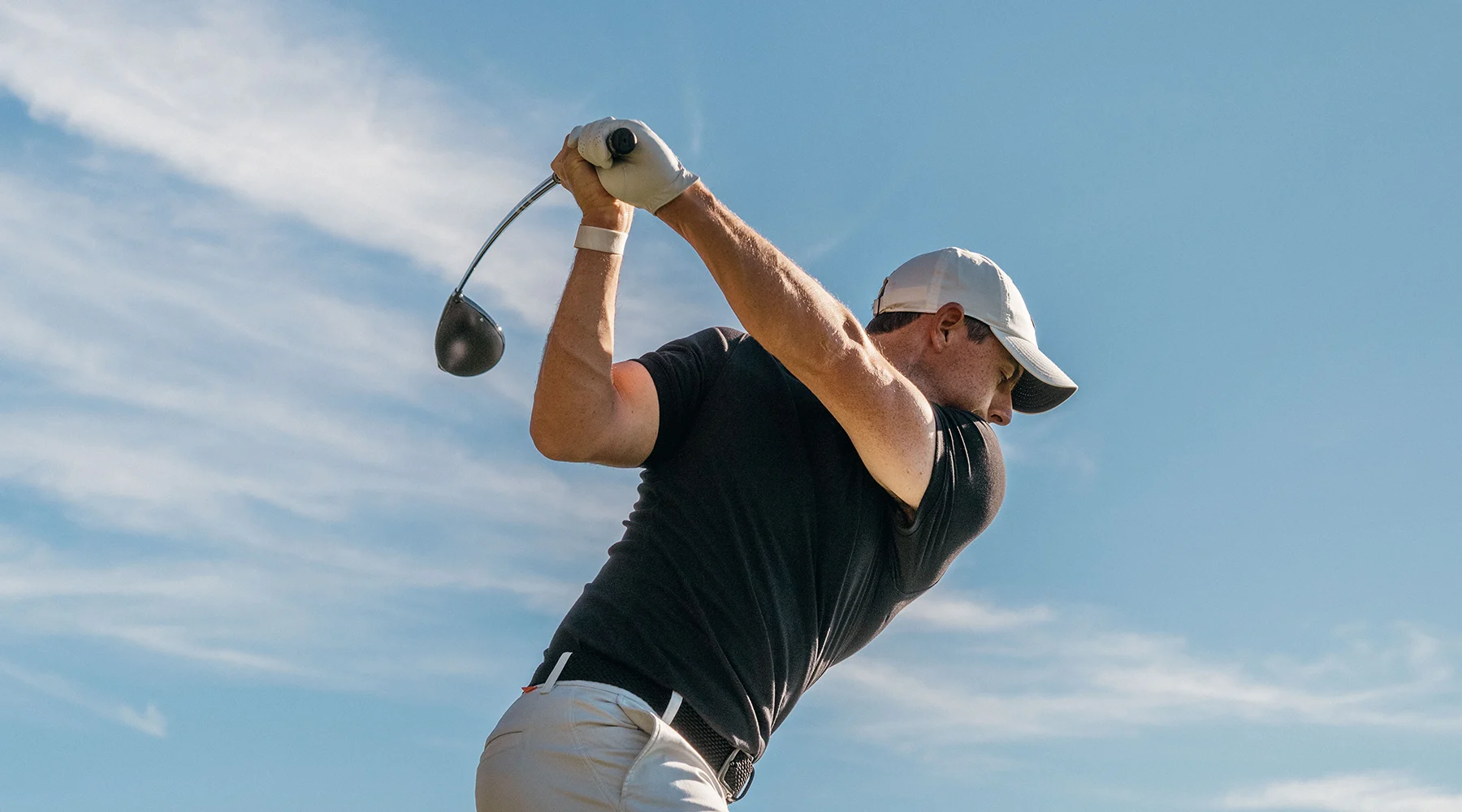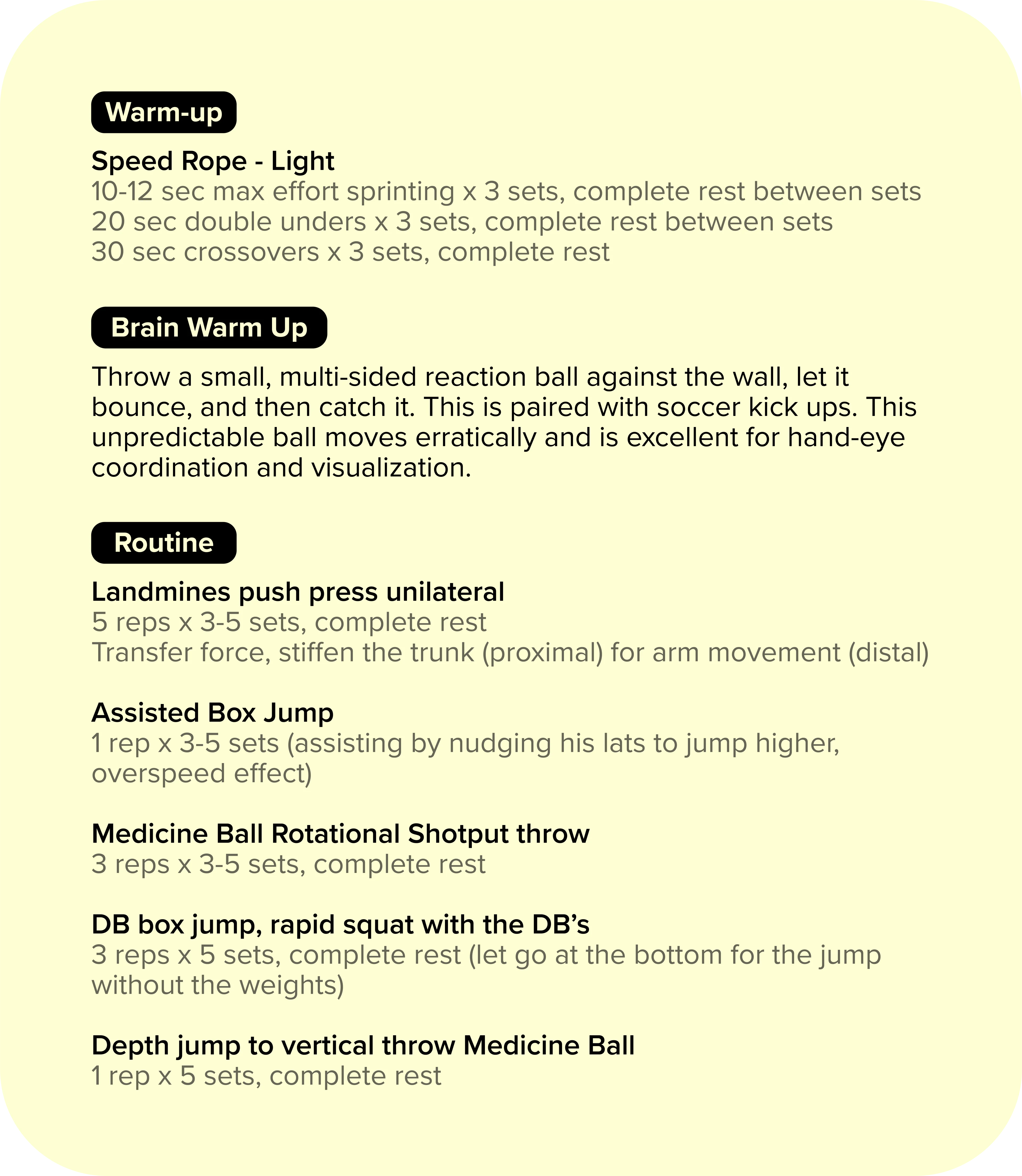Topics
- Article
- Training & Exercise
How Golfer Rory Mcllroy Stays On Top of His Game with Performance Coach Ro Sharma

What’s the secret to being one of the most athletic and explosive golfers in the world aside from technical skill? Training. Rory McIlroy’s Performance Coach Ro Sharma uncovers the how and why behind Rory’s training, and what the rest of us might be able to take away for our own routines.
Program Philosophy
When designing Rory’s workouts, there’s always a clear purpose based on his needs. These range from enhancing his physiology to being able to execute a wide range of fine motor skills and to repeatedly deliver an explosive golf swing. We establish the type of adaptations we’d like to achieve from the training plan to support the needs.
Movement
Rory’s explosive golf swing requires many things to happen with perfect synchronization. For movement to occur, nerves are turned on, that tell the muscle to contract which pulls on connective tissue (tendons) which pull on the bone. These movements can all be trained, some more than others. For example, Rory has a higher percentage of fast twitch fibers (explosive) which are required for generating an explosive swing. This is due to genetics and the type of training he has gravitated to over the years. Fortunately for us, muscles have plasticity, meaning they can be changed and take on properties from the opposite spectrum if they are trained appropriately over time.
Fine-Tuning the engine
There are many methods to train that can influence a number of qualities such as maximal strength, speed, and power. It often requires a specific combination to achieve the desired result. Using the force (strength) and velocity (speed) curve, rate of force development and certain testing devices, we can determine which qualities to train to achieve Rory’s objectives. Simplistic, validated tests such as the counter-movement jump and a squat jump can provide you with good information and a baseline.

Force and velocity have an inverse relationship – when you increase the force (strength required) of an exercise, it will cause a decrease in the velocity (or speed) and vice versa. In training, the goal is typically to shift the curve to the right, both increasing the load/velocity of workouts and ability over time.
KEEPING THE FRAME SOLID
Rory has to generate, store, and dissipate great forces, which requires a solid chassis. Sustaining and developing this requires a blend of non-specific and specific exercises, which could include:
- Isometric holds for the nervous system and connective tissue.
- Anti-rotation exercises at varied loads.
- Correcting muscular imbalance, energy leaks.
- Trunk/core strengthening.
- Increasing grip, wrist and overall body strength.
THE RIGHT DOSAGE
A training adaptation only occurs if the magnitude of the training load/stimulus is above Rory’s base level and as an advanced athlete, he may require more significant stimulus than a novice. This is where WHOOP provides insights about when to go for it and when to adjust the workout based on his recovery. This, combined with regular testing of grip strength, CO2 tolerance, explosive jump tests and Rory’s feedback, helps fine-tune the approach. We’ll also modify the total number of sets, reps, load, rest, tempo/velocity, exercise selection/order, and timing of the session based on the adaption we are looking to achieve. Progressive overload and consistency are ultimately key to making progress.
The Program
Below is a workout routine that contains many of the principles that we use over the year, including strength, explosive and conditioning days. These phases are typically periodized and updated every 4-6 weeks once the objective has been achieved. *Disclaimer: training is individualized and one should modify their routine for their unique needs and abilities. ** Warm up specifically for the movements and relative loads.
Typical split (non-tournament)
- Strength
- Active Recovery
- Power
- Conditioning Specific
- Repeat
STRENGTH DAY
- Maximum intent, moving loads at controlled pace (70% 1RM or higher)
- Complete rest on max effort lifts
- Progressive overload – gradually adding intensity to improve your performance.

ACtive RECOVERY DAY

POWER DAY
- Maximum intent, moving moderate loads fast (30-70% 1RM)
- Low reps
- Complete rest between sets

CONDITIONING DAY

Cool Down
Breathing exercises are used at the end of the workout to down-regulate the body and kick start recovery. They can be done seated or even walking. For 3-4 minutes, complete a 4 second inhale through your nose, followed by a 6 second exhale. This equates to 6 breaths per minute which is a good starting point. Rory loves working out and will train throughout the year, wherever he is in the world. Consistency and progressively increasing the challenges of the routine is what ultimately brings the results.
Your Routine
Looking to take your routine to the next level? Try one of Rory’s pre-built workouts with the all-new WHOOP feature, Strength Trainer. See the muscular and cardiovascular load of your workout to get insights about how your body responds to strength training and when you should focus on recovery.